Boiling milk can be tricky, but finding the right vessel for the job doesn't have to be! Milk is a delicate liquid often boiled for a recipe or a comforting, warm drink. Milk can easily overflow or burn if not boiled carefully. We've searched for the best pots, and you might be surprised to learn there is a specific vessel for this task -with many models available!
The best vessel for boiling milk is a milk pan (or pot); however, you can easily boil milk using a petite saucepan. Milk pans are small, ranging in capacity from 6-ounces to 60-ounces. These bulbous pans feature tall sides and are made from various materials such as stainless steel, cast aluminum, and porcelain enamel. A long handle enables easy maneuvering atop a hot stove, and spouted sides enable a dripless pour. Some of the best milk pans include:
- IMEEA Milk Pot
- Farberware Classic Series Melting Pot
- Neoflam Milk Pot
- Enamel Milk Pan
- Cuisinox Pot-127 Milk Pan
Now, of course, you can use a saucepan to boil milk in a pinch but knowing a milk pan is the best option can keep this cooking task simple and flawless. Please keep reading as we take a closer look at these highly-recommended milk pans. We'll also discuss why the type of vessel matters when boiling milk. If you're wondering whether boiled milk is healthier, we've answered that too and will share some great tips to boil milk with ease.
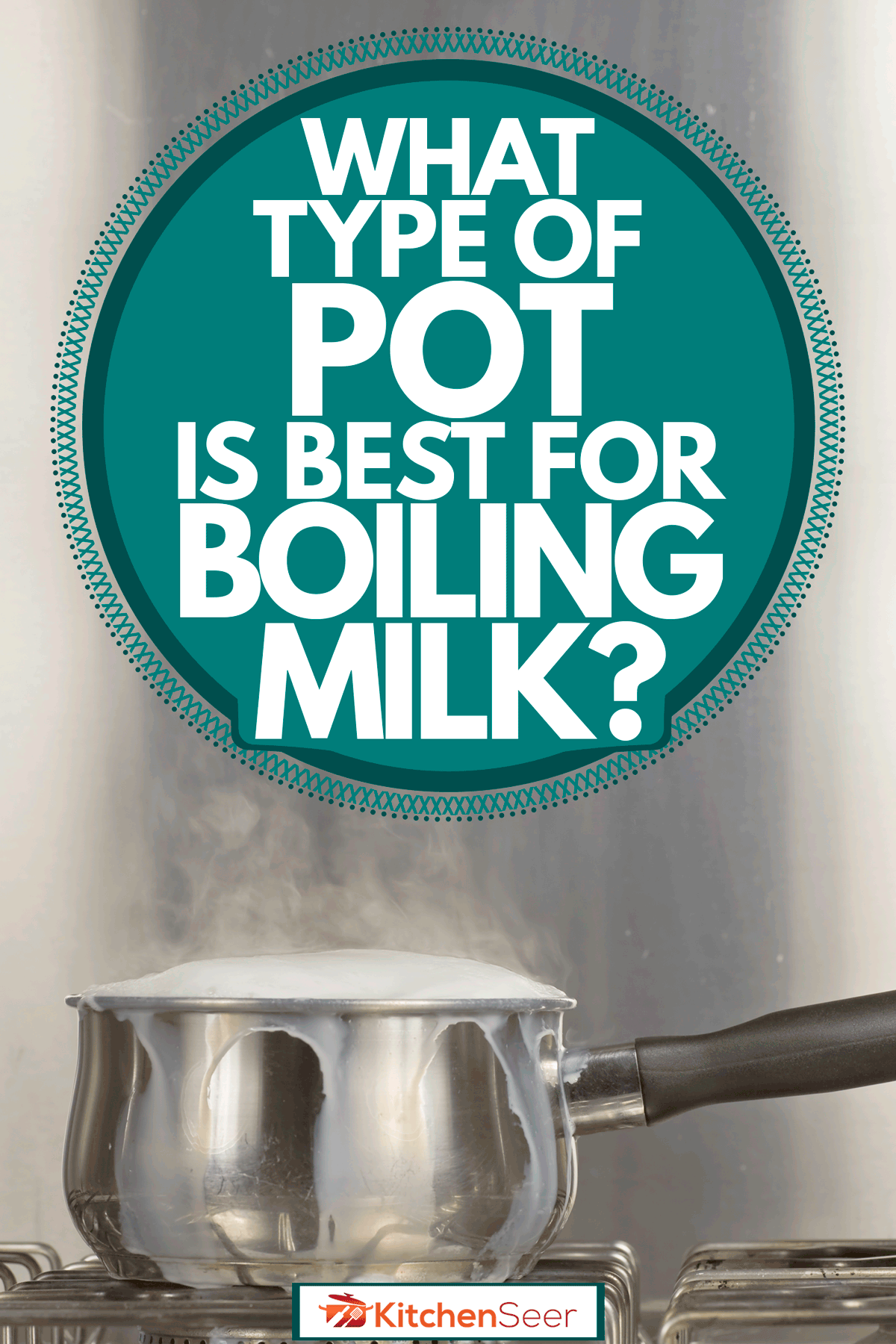
What is a Milk Pan?
Milk is boiled for various recipes, such as puddings, custards, glazes, hot chocolate, or a frothy coffee top-off. Typically, you'd reach for a saucepan to boil milk -particularly a pan with spouted sides for easy pouring. However, a milk pan has been specifically designed for this purpose; to provide an even heat distribution with long-handled accessibility and a spouted, smooth pour.
Odds are when boiling milk that you will only need a small amount for one to two cups of ingredient or beverage. A saucepan, unless your kitchen is very well-equipped, is usually too big. This means that a teeny bit of milk lining the bottom can scorch quickly! A milk pan provides just the right size for the most common boiled milk quantities. Milk pans have either bowed or straight, high sides (4") and a broad top (2" diameter). A lengthy handle lets you easily swirl or pour hot milk, giving ample distance to prevent burns from steam.
If you are worried about owning such specialty cookware, know that you can also use a milk pan to melt butter, hard-boil eggs, and make delicate sauces like hollandaise. These handy pans can be stored in a relatively small space or even hang by the handle amidst your other pots and pans.
Best Type of Milk Pan
Let's have a closer look at those recommended milk pans that we'd listed earlier.
1. IMEEA Milk Pot
This high-quality, 12-ounce milk pan is made from food-safe stainless steel with an aluminum core to promote rapid, even heating. A thicker bottom will also prevent stuck-on milk, for a perfect result each time! It can be safely used on induction, gas, and electric ranges. Click here to see on Amazon.
2. Faberware Classic Series Melting Pot
Featuring stainless steel construction with an aluminum core, this durable melting pot is ideal for boiling milk. This 20-ounce pot is a multipurpose piece of cookware, equipped with a lid for various functions on gas and electric ranges. Easily toss in the dishwasher for a quick clean. Click here to see on Amazon.
3. Neoflam Milk Pot
Ecolon, non-stick ceramic coating prevents stuck-on milk at the bottom of this cast aluminum pan. Available in 32-ounce and 60-ounce sizes, you can also choose the best color (green, ivory, or pink) to coordinate this versatile pan with your kitchen. Not compatible for induction use. Recommended to hand-wash with non-abrasive cleanser. Click here to see it on Amazon.
4. Enamel Milk Pan
This 17-ounce, porcelain enamel milk pan with a wooden handle is not only adorable but provides comfortable functional use. If purple clashes with your kitchen, also choose from midnight blue, milk-white, pink cherry design, and chili red. Use atop induction, electric, and glass top ranges (may be too small for gas burners). Click here to see on Amazon.
5. Cuisinox Pot-127 Milk Pan
Food-safe stainless steel offers durable construction for a flawless milk boil, holding 24-ounces. An induction base promotes rapid, even heating throughout. Toss in the dishwasher for an easy clean. Click here to see on Amazon.
Why Does Milk Overflow When Boiled?
As the milk boils, you might have observed a rapidly rising froth atop the surface. These airy bubbles tend to overflow if not watched carefully. Bubbles form when milk heats, as air is released from the liquid. Because milk contains fats, the bubbles do not easily burst, rather trap the air inside beneath a thin, fatty film. Expanding bubbles do not pop out of the way as water vapor tries to escape and new bubbles are formed; continuously piling-up bubbles generated (or froth) as the heat warms the milk eventually overflow.
There is some complex chemistry occurring in your boiling milk pan between fats, proteins, and heat -it's what makes our delicious, thick froth so enjoyable! But, how do you prevent milk from boiling over? Firstly, do not use a lid! You'll want to keep the surface area uncovered, and if possible, during the process, break the tension on the surface to allow bubbles to burst by gently stirring.
- Use low heat.
- Set a wooden utensil into the center of the pan with the handle leaning against the edge, and leave it while milk comes to a boil -alternatively, lie a wooden spoon across the top of the pot and leave it while milk boils.
- Use a pot watcher atop the saucepan; it prevents overflow and helps to manage the distribution of steam.
- Coat the inside of the pan with oil spray or butter before adding and heating milk.
- Use a double boiler; to learn about this alternative method, read "Is a Double Boiler (Bain Marie) Supposed to Touch the Water?"
Interestingly, these techniques for boiling milk will prevent spillage and prevent milk from sticking to the pan's bottom.
Click here to see a stainless steel pot watcher on Amazon.
Is Boiled Milk Healthier?
Heating pasteurized milk does not make it any safer to consume. One downside to drinking boiled milk is that heat breaks down milk's proteins, making them less beneficial to your health. However, boiled milk does have its benefits:
- It contains more short-chain and medium-chain fatty acids, promoting a healthy gut and weight loss/energy boost, respectively.
- Less lactose (due to broken-down proteins) means it can be easier to digest for those prone to lactose intolerance, milk allergies, or milk sensitivity.
- Reduces pathogens, particularly for raw milk.
How Do You Boil Milk In Stainless Steel?
You might worry about scorching milk if using a stainless steel saucepan or milk pan. For an easy, preventative technique, start by pouring water into the bottom of the pan. Use just enough water to coat the bottom. This will provide a barrier between the milk and the pan's bottom. Always use the lowest heat setting to boil milk. Additionally, you can use any of the aforementioned tips to avoid boiling over.
Final Thoughts
Boiling milk is a delicate task, but with the right cookware and a few tricks up your sleeve, you'll achieve perfectly warmed milk every time! We hope you've found this post helpful to equip your kitchen and improve your cooking repertoire. You might also be interested in reading "What Type of Pot is Best For Boiling Water?"







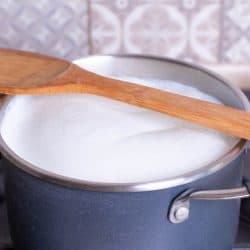
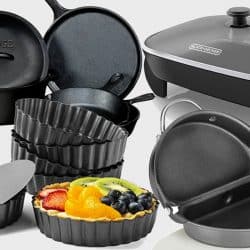
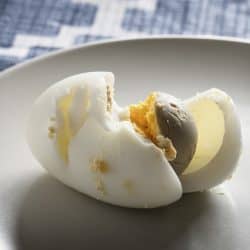
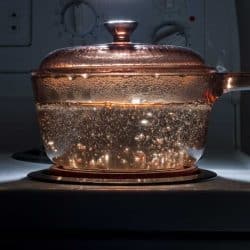
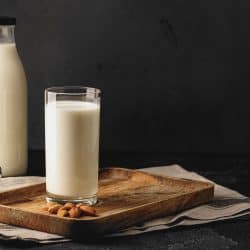
![Close up half cut over cook bad boiled egg on wooden plate.The green color around the yellow egg showing in been cook too long. Hard boiled egg high protein healthy snack for diet. - How Long To Boil An Egg [Soft And Hard]](https://kitchenseer.com/wp-content/uploads/2022/05/CLOSE-1-250x250.jpg)
Boiling milk is a delicate task, but with the right cookware and a few tricks up your sleeve, you’ll achieve perfectly warmed milk every time! We hope you’ve found this post helpful to equip your kitchen and improve your cooking repertoire.